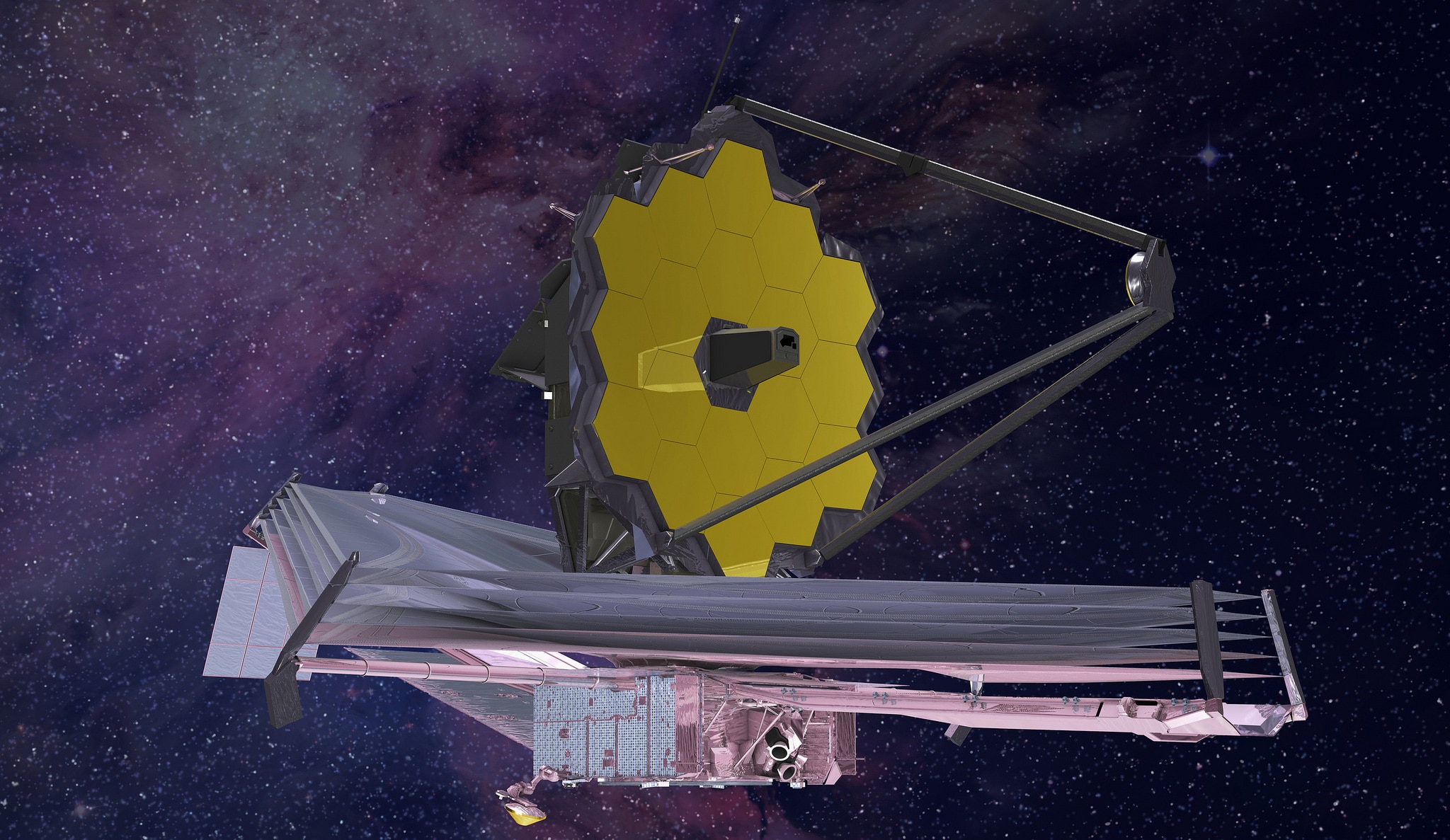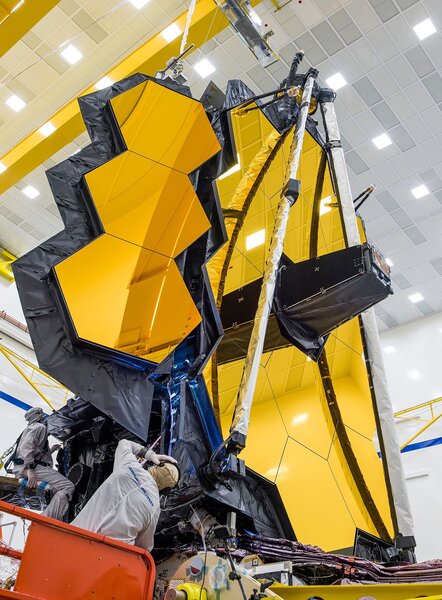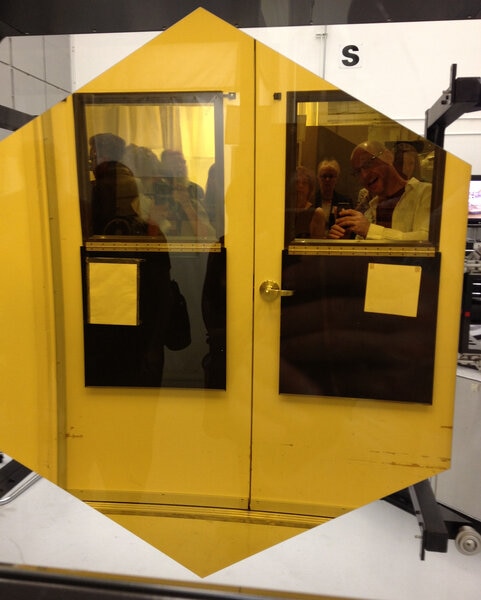Create a free profile to get unlimited access to exclusive videos, sweepstakes, and more!
Watch as the James Webb telescope unfolds its 18 gold-plated hex mirrors

The James Webb Space Telescope (JWST) will be a revolution in astronomy. It sports a whopping 6.5-meter wide mirror, the largest that will ever have been flown into space, and will examine the Universe in infrared light, where asteroids, exoplanets, dust, black holes, and distant galaxies glow. It may reveal evidence of the first stars ever born, peer into atmospheres around planets orbiting other stars, and see the dying light of exploding stars farther than ever before.
First, though, it has to launch into space. Even before it starts observing the sky it has to deploy that giant mirror, itself made up of 18 hexagonal mirrors, each 1.3 meters wide. To fit inside the payload fairing of an Ariane 5 rocket, the mirror is folded into three sections, and once in space has to unfold like a flower warming itself into the dawn Sun. The final configuration has very tight tolerances, so this process has to work perfectly within those constraints.
The observatory is currently in a cleanroom at the Northop Grumman facility in Redondo Beach, California. In early March, a big test was performed where engineers commanded the telescope to unfold its mirrors as it would in space. Watch this very cool time-lapse animation of the event:
Niiiice. You can see the two outer petals opening up to complete the mirror. Cables hung from overhead supported the weight of the assembly, since of course it will be weightless in space and is designed fro that environment. The 18 hex mirrors are coated in gold, which is an excellent reflector of infrared light.
The big mirror is called the primary mirror, the part of the telescope that will collect the light from celestial objects. It then reflects that light to a smaller (0.74 meter wide), circular, secondary mirror. The two long poles you can see in front of the primary mirror hold on to the secondary, which is itself above the primary in the video. That too will have to deploy once in space. The light from a target bounces off the primary onto the secondary, which then reflects the light again into a hole in the middle of the primary into the instrument bay behind it where the actual cameras are. JWST has quite the quiver of different ways to dissect that light, including imaging cameras and spectroscopes.
Underneath the mirror assembly is a gigantic sunshade, a series of layered reflective sheets that will block the sunlight, keeping the observatory passively cooled in space. The sunshade is about the size of a tennis court, and like the primary folds up for launch and will have to unfold in space for everything to work properly.
The observatory is immense, and incredibly complex, which explains in part the huge $10 billion price tag and copious delays (a big part has been due to management issues and fairly large underestimates of costs, originally budgeted for under $1 billion). The launch has been repeatedly delayed (it was originally planned to launch between 2007 and 2011), and now may happen in July 2021, though even before the current issues with the current pandemic that date was doubtful.
If I sound frustrated, well, I am. NASA has a tendency to be very overly optimistic when it comes to designing, building, and launching big space telescopes; for example, Hubble's price ballooned a lot over time. Even then, it cost additional billions after launch for servicing missions using the Space Shuttle.
Hubble, of course, is considered a big success story now, and in many ways I agree; I worked on it myself for a decade and know first-hand how incredible a machine it is. It still astonishes us today, very nearly 30 years after launch. But we have to be honest here, and seeing the same issues crop up with JWST that we all suffered through with Hubble is a big part of my frustration.
If all goes well with JWST once it's in space and in the proper orbit, I would guess a lot of these sins will be forgiven. That's fine, but I hope they're not forgotten. There will be more big projects NASA will undertake in astrophysics, and I will want to support them, of course, but I also will want to know that we won't have to wait an extra decade or two for them to start their observations.
I want JWST to work, and work magnificently. I want it to reveal the cosmos in a way never seen before, and to leapfrog our understanding of how the Universe works. But the project itself should teach us something about ourselves, too: How we dream of exploration, but just as importantly where we go sideways when the rubber hits the road.
















